Home » International
Category Archives: International
Moving from Silence to Action: Race and Racism in Postsecondary Language Classrooms
Racism is present in postsecondary language classrooms throughout the world. Research shows that a connection exists between race and language teaching, but more importantly, racist and colonial foundations persist in the language classroom (Kubota & Lin, 2006). This can be seen through the classroom presence of epistemological racism, White supremacy, and social hierarchical power structures.
The new IGI Global book, Interrogating Race and Racism in Postsecondary Language Classrooms (Huo & Smith, 2024), takes an important step forward by investigating race and racism in postsecondary language classrooms, how race interacts with language, how power impacts and shapes language teaching and learning, and how hegemony and ideology perpetuate linguistic injustice and discrimination against racially minoritized students and instructors. It also examines how racism has created institutional, structural, and individual barriers for language teachers and learners in higher education. It does this by applying and integrating major theoretical frameworks, embracing various discourses, narratives, stories, and counter stories in different geographic and language teaching contexts, including a collection of liberatory and emancipatory anti-racist and anti-oppressive pedagogies in global postsecondary language teaching contexts, and using intersectionality between language and race to problematize raciolinguistic injustice and hierarchy.
As educators, we can not be silent on the presence of race and racism in postsecondary language classrooms. Instead, we should “examine the intersectionality of language and race to understand linguicism and the historical contextual basis that frames discourse around English language education, and how it interplays and intertwines with race, racial identity, and racialization” (Holden & Smith, 2024, p. 317).
-Clayton Smith
References:
Huo, X., & Smith, C. (2024). Interrogating race and racism in postsecondary language classrooms. IGI Global. doi: 10.4018/978-1-6684-9029-7
Kubota, R., & Lin, A. (2006). Race and TESOL: Introduction to concepts and theories. TESOL Quarterly,40(3), 471–493. doi:10.2307/40264540
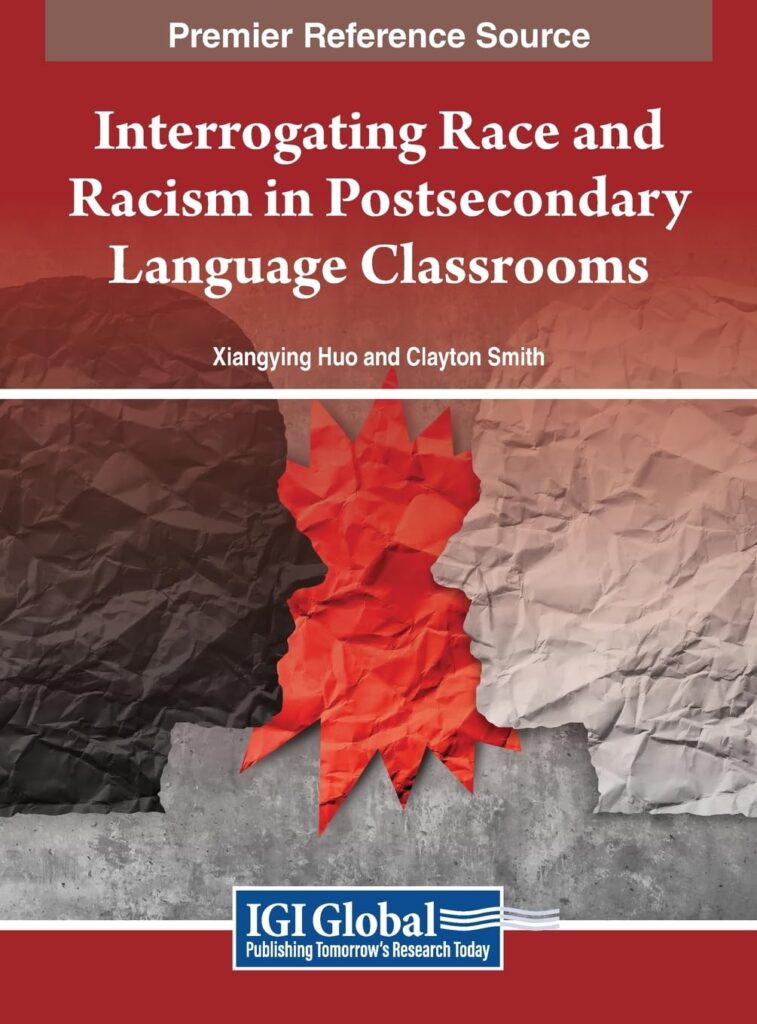
Pathways to Post-Pandemic Enrolment Growth in Higher Education
Recently, Stefanie Ivan, an enrolment management consultant and Royal Roads associate faculty, and I had an opportunity to facilitate a webinar on “Pathways to Post-Pandemic Enrolment Growth in Higher Education.” This is a follow-up webinar to the one we conducted on post-pandemic higher education enrolment trends (see my earlier blog) in February.
We asked participants to share their most effective strategic enrolment management (SEM) strategy efforts. We then asked them to describe strategies for enrolling and supporting international, Indigenous, and domestic learners. Lastly, we asked them to say a bit about the learner and student support they provided.
When asked to provide one word that describes the effectiveness of current SEM strategy efforts, the most frequently mentioned were disconnected, work-in-progress, and growing. Others identified include developing, unsure, hopeful but slow, disjointed, uninformed, innovative, ongoing, challenging, deepening, modest, and uncertain. It appears that the experience with SEM is quite variable with some saying it is stalled while others report it as in progress or growing.
We then asked about strategies in use to enrol/support specific types of students. Below are some of the comments we heard.
International Students:
- Work closely with our key agents and agent relations management; strengthen relational networks
- Develop a personal connection to the institution and community
- Targeting markets that connect with Canada’s labour shortage areas
- Provide incentives that are appealing to international students
- Optimize admissions processes
- Utilizing a group effort to recruit international students
- Develop personal communications
- Have not returned to accepting international students yet
Indigenous Students:
- Focused listening and working with communities to address their concerns and needs; engaging communities through partnerships
- Developed an Indigenous strategic plan
- Established an Indigenous scholars’ circle
- Increasing and deepening supports
- Going to communities with incentives, application forms, and testing formulas for completion on-site
- We are not currently recruiting Indigenous students
Domestic Students:
- Balancing in-person and online events
- More first-year transition strategies to help retention and success
- Target movement in the job market and second-career students
- Utilize a blended delivery model for full-time and part-time students
- Work toward understanding what students and employers
- Reach out to withdrawn student
- Establish better support services, create more webinars/engagement, partner with community organizations, and follow-up strategies
- Treat in-country ESL/ELL students as domestic prospects
Learner and Student Support:
- Online advising
- Development of non-academic learning communities
- Increased/streamlined communications (phone, email, forums, chatbot, extended hours, weekends)
- 1:1 wellness check-ins
- Alternative accommodations for learners who need it
- A strong return to in-person and social and co-curricular activities
- Entering students into classroom settings right away to determine learning needs
Here is the Video from the webinar.
With so much to do to stabilize and grow enrolments during these post-pandemic days, it will be important to be strategic and there is no better way to do this than through adopting and implementing SEM!
-Clayton Smith
Canadian Post-secondary Enrolment Trends
Recently, Stefanie Ivan, an enrolment management consultant and Royal Roads associate faculty, and I had an opportunity to identify enrolment trends facing Canadian higher educational institutions for a series of Royal Roads University webinars. In this blog, I will share what we found.
Let me describe our methods. First, we reviewed publicly-available data on the web that included provincial data reports as well as those compiled by Higher Education Strategy Associates, Globe and Mail, Statistics Canada, Canadian Undergraduate Survey Consortium, and the Council of Ministers of Education. Second, we collected comments from our social media network and Canadian colleagues. Third, we received input from students currently enrolled in the Royal Roads University Graduate Certificate in Strategic Enrolment Management.
Here are some of the aggregate enrolment trends we uncovered:
- College enrolments are continuing to grow, mostly due to continued international student enrolment growth. Some declines were reported in the Maritimes. Also, there is a reduction in demand for trades programming due to low unemployment.
- University enrolment is mostly stable or recording slight increases/decreases. Some of this is due to part-time student enrolment increases.
- Students may be shifting away from big urban research universities.
- A slight increase in inter-provincial mobility was experienced in the Maritimes.
- Admission conversion rates are becoming less predictable.
- Completion rates have been impacted in some areas.
- There is a growing interest in a gap year for direct-entry high school students.
And here are the student-type enrolment trends we found:
- Indigenous enrolment and completion rates are lower than rates for non-Indigenous persons. But the Indigenous birthrate is still the fastest among the groups monitored.
- International student enrolments continue to lead enrolment growth.
- Attrition rates are still impacted by the pandemic and high school students who did not seem to be prepared for post-secondary studies.
- The enrolment mix continues to change. Visible minorities, learners with disabilities, and learners with mental health issues are increasing.
- Students want to be primarily on campus, with some hybrid instruction.
- Trust building with communities continues to impact some enrolment.
Here is the Video from the webinar.
We will be doing a follow-up webinar to explore the enrolment strategies that institutions are using to address these challenges. Feel free to share any strategies your institution is using or hoping to implement in the next year, and we will include them when we present on this topic for our follow-up webinar on Tuesday, March 21st. Here is a link to sign-up if you want to listen in or (hopefully!) participate in our discussion.
The times are certainly uncertain and changing.
-Clayton Smith
Taking Time to Ponder
Harvard psychology professor Ellen Langer said something on this week’s Sunday Morning news show that caught my attention and put me on a reflective path.
Langer said that human beings are unique in their ability to think about the future, which leads us to be thinkers about our unique and collective futures (Weisfogel & Ross, 2020). While recognizing that plans create an illusion of control and that plans are guesses, these uncertain times call for us to contemplate and hope about what is to come. Langer goes on to say, “But what we need to recognize is that if something leads us in a different direction, that could end up even better for us.” So, in other words, by taking time to ponder, we each may be able to find a pathway toward a different but perhaps more enjoyable destination.
I thought about this all day.
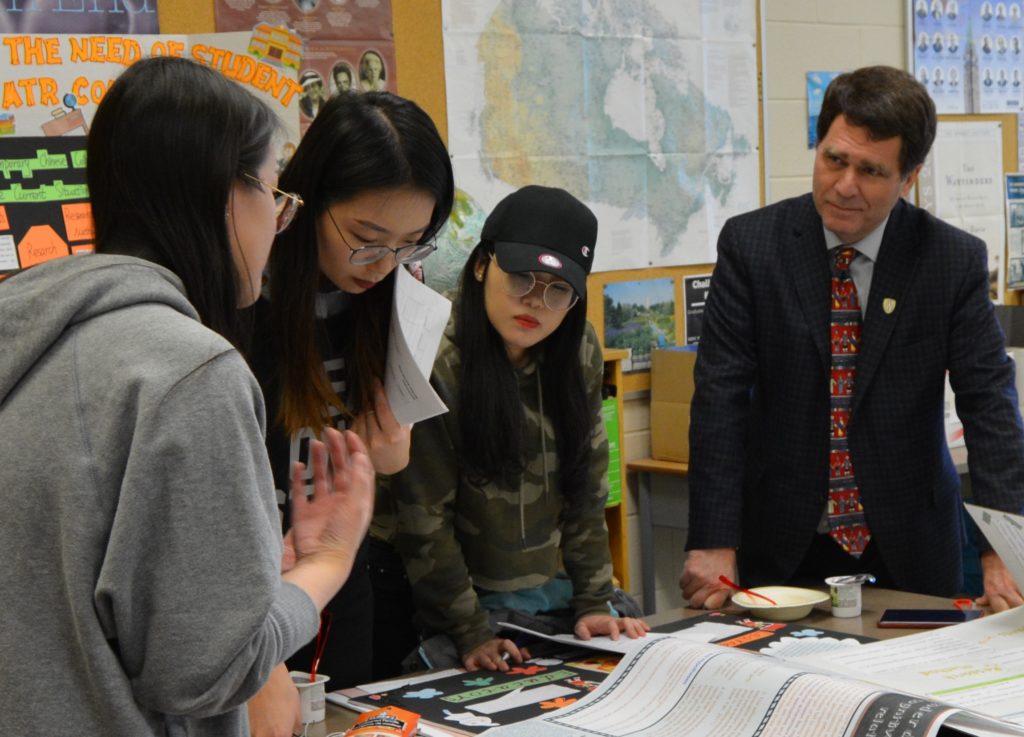
Since returning to teaching four years ago, I have focused my research in three areas. First, I have continued my career-long work in critically assessing the impact of Strategic Enrolment Management on the twin goals of achieving institutional health and student success. Second, I renewed my interest in the international student experience by exploring student perspectives on the way we teach in our colleges and universities and how we can improve our teaching of culturally and linguistically diverse international students. Third, after coauthoring two open educational resource (OER) textbooks and making increasing use of OERs in my teaching, I am beginning to focus on how we can achieve deep and interdisciplinary learning by enhancing our use of OERs.
While each of these research threads are different, it occurred to me that there is common ground between them; namely, the amplification of the student voice. If ever there was a time to pay more attention to student views, it is now. The COVID-19 Pandemic has left so many of us questioning the future. This includes students, faculty and staff, and those who lead our postsecondary educational institutions.
Psychiatrist Pavan Madan, who was also interviewed on Sunday Morning, spoke about the anxiety that is impacting us all. Dr. Madan suggests that “we put our big dreams aside for now and focus on the small, more manageable details of daily life” (Weisfogel & Ross, 2020).
So, in this public space, let me say that during the balance of the time we have in the Pandemic and for the time to follow, I will commit to amplifying the student voice in all I do.
If this interests you, consider joining me (Clayton.Smith@uwindsor.ca). I am thinking that both the journey and the destination will be quite enjoyable.
Clayton Smith
Weisfogel, A. & Ross, C. (27 December 2020). Going to Plan B: When COVID pulls the rug out from under you. Sunday Morning. New York: CBS. https://www.cbsnews.com/news/going-to-plan-b-when-covid-pulls-the-rug-out-from-under-you/?ftag=CNM-00-10aab8c&linkId=108041071
One Tree Does not Make a Forest

Last week, I had the pleasure of attending the 6th Annual International Conference on West-East Reciprocal Learning in Education held at the University of Windsor. It was a spectacular event!
Reflecting on the event, co-director Dr. Shijing Xu, said “one tree does not make a forest.” By this she meant that it takes many partners to achieve success. And what a success it has been.
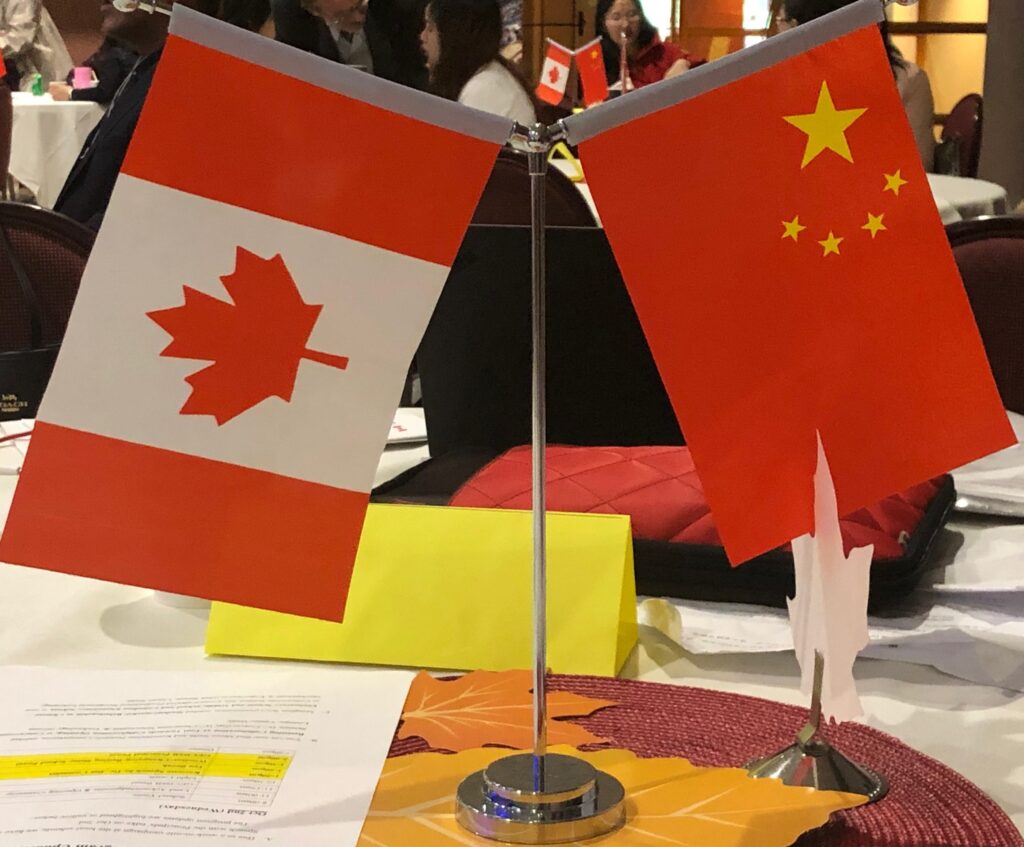
Statistics tell us that 233 students from Southwest University in Chongqing, China and 100 students from the University of Windsor have participated in the joint Reciprocal Learning Program that sees teacher candidates travel to China or Canada to experience the way teaching is done in another country, and to take in a little culture.
I can remember when it all started 10 years ago. Drs. Xu and Connelly were so hopeful. They believed that a peaceful world could be created by getting to know each other better.
The alumni couldn’t agree more. David Potocek said it was “stepping out of our comfort zone.” Taylor Paré agreed by saying we were “voices heard around the world” and “no matter where in the world you find yourself, its all about getting a child to smile at you.”
Last week we remembered. And now it is time to ensure that more teacher candidates in China and Canada benefit from this outstanding program. Let’s continue planting more trees!
-Clayton Smith
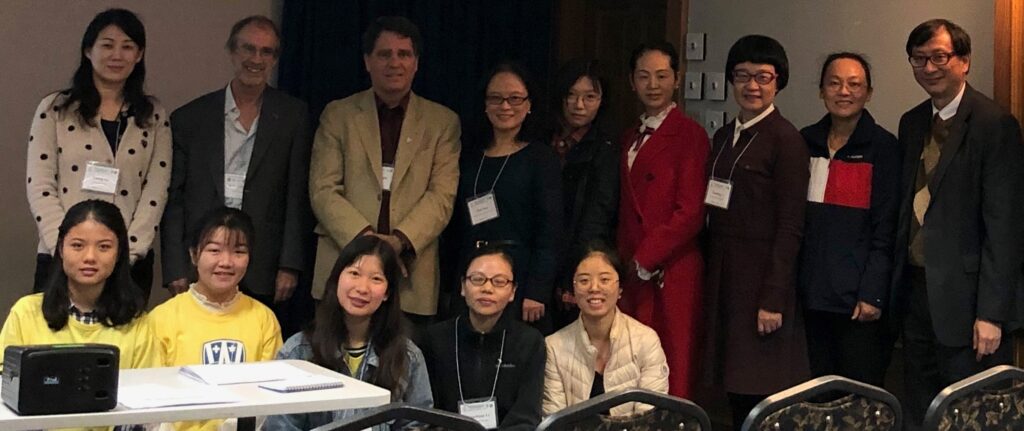
Rowing Against the Wind
For many, the road to writing a master’s thesis is challenging and often filled with minefields. Now, imagine what it is like to write your first major publishable-quality academic paper in a language other than your native language. This will give you a sense as to the pathway Yuehua Zhu encountered on her way to defending her master’s thesis last week.
Yeuhua took my Research in Education class a year ago and, after learning about the magic of educational research, decided to pursue a master’s thesis. This was not easy for her. She gave it a great deal of thought and, in the end, began her journey. But she was rowing against the wind!
She used all of the support that was available, including weekly meetings with me and frequent visits to the Leddy Library Writing Support Desk. She also asked for feedback from her student colleagues, which helped a great deal.
Two of the members of Yuehua’s thesis committee were also of great help to her. Drs. Ma and Zhou provided wonderful advice to her on directions her research might go to achieve her stated purposes.
Yeuhua Zhu has completed a thesis which fills an important gap in the research literature by showing how student political participation impacts social integration, student sense of belonging, and English proficiency; all of which contribute to Chinese-origin student retention and success at Canadian post-secondary institutions.
Look for her thesis, “Enhancing Social Integration in Canadian Post-Secondary Educational Institutions for Students of Chinese-Origin through Political Participation.” It is outstanding.

Dr. Clayton Smith, Dr. George Zhou, and Dr. Zhenzhong Ma
-Clayton Smith
Taking My Breath Away!
Throughout the summer, it has been my pleasure to enjoy working with two wonderful undergraduate students, Miranda Pecoraro and Renan Paulino. Each contributed in meaningful ways to our ongoing research projects that are examining student views on the promising practices for teaching linguistically and culturally diverse post-secondary international students.
Miranda Pecoraro is a third-year Social Work student from Windsor, Ontario who is in our Outstanding Scholars program. She has been working with me for the past three semesters. The Outstanding Scholars program “provides an exceptional and supportive undergraduate learning experience for high-achieving students, emphasizing depth and breadth of research-based academic inquiry, strong and ongoing faculty/student mentorship, effective communication of research achievement, and achievement of external recognition of academic excellence.” Check out this video where Outstanding Scholar students explain the OS program in their own words.
Renan Paulino is a third-year Education student from Brazil who joined us as part of the Mitacs Globalink Research Internship program, which places undergraduate students at Canadian universities from a wide variety of countries (e.g., Brazil, China, European Union, Germany, India, Israel, Mexico, UK, US) to engage in faculty-led research projects. The focus of the Mitacs program is to create awareness of the leading research being done at Canadian universities and to enhance linkages between top international students and Canadian university faculty members. Here is a video on the Mitacs Canada Globalink Research Internship program. Interestingly, this is Renan’s second international exchange in Canada (the first was in St. Johns, Newfoundland while he was a high school exchange student), and he is considering returning for graduate education in the near future…hopefully with us!
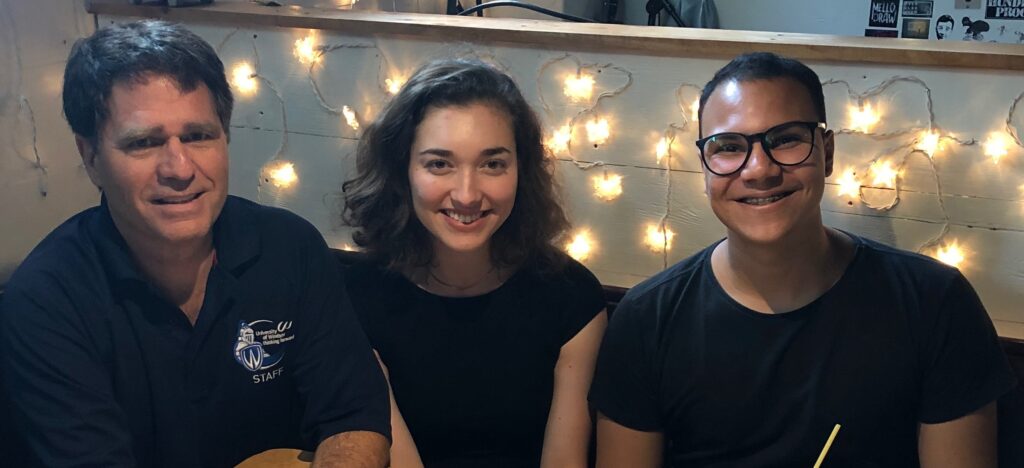
Miranda Pecoraro and Renan Paulino
Undergraduate research is one of the “high-impact practices,” originally identified by George Kuh (2008), that can be life-changing. They “demand considerable time and effort, facilitate learning outside of the classroom, require meaningful interactions with faculty and students, encourage collaboration with diverse others, and provide frequent and substantial feedback.” Students who participate in high-impact practices experience a more complete university student experience. Those that engage in undergraduate research frequently develop strong relationships with student peers and faculty members.
Our students participated in writing projects that led to a peer-reviewed published book chapter and research poster, and a journal article in press on the topic of “Variability by Individual Student Characteristics of Student Satisfaction with Promising International Student Teaching Practices.” They also developed a workshop on this topic for our upcoming University of Windsor GATAcademy. Further, they are facilitating an international student-learning community project that is continuing to investigate the difference in student opinions between STEM (Science, Technology, Engineering, and Mathematics) and non-STEM students on this topic.
They really take my breath away!
I cannot wait to welcome more undergraduate students into our research group!
Clayton Smith
References:
Kuh, G. D. (2008). High-impact practices: What they are, who has access to them, and why they matter. Washington, DC: Association of American Colleges and Universities.
Smith, C., Zhou, G., Potter, M., & Wang, D. (2019). Connecting best practices for teaching linguistically and culturally diverse international students with international student satisfaction and student perceptions of learning. In James, W. B., & Cobonoglu, C. (Eds.), Advances in Global Education and Research Volume 3, (252-265). Sarasota, FL: Association of North America Higher Education International. https://scholar.uwindsor.ca/educationpub/24/
Smith, C., Zhou, G., Potter, M., & Wang, D. (2019). Connecting best practices for teaching linguistically and culturally diverse international students with international student satisfaction and student perceptions of learning. Poster presented at the Society for Teaching and Learning in Higher Education Conference, Winnipeg, MB.
Ireland Take-Aways
While in Ireland last week, I became aware of the concept of “take-aways” rather than the North American term “to-go,” and so I thought I would reflect on a few take-aways from our recent, mostly sunny, trip to Ireland.
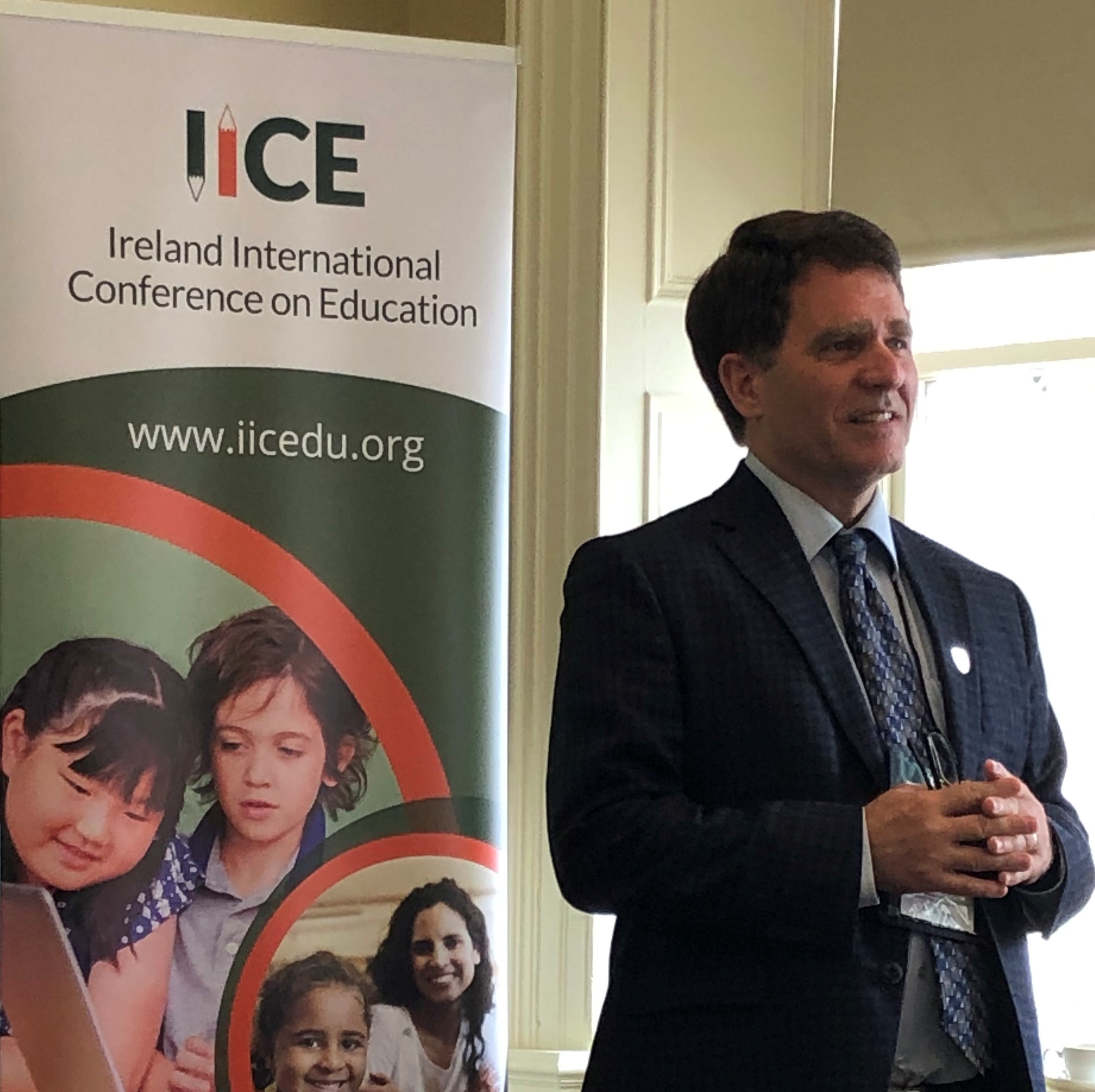
Let me start with my reason for visiting the emerald isle.
I had the pleasure of presenting a paper on some research my research team has recently completed on “Connecting Best Practices for Teaching Linguistically and Culturally-Diverse International Students with International Student Satisfaction and Student Perceptions of Learning” at the Ireland International Conference on Education, which was held in Dún Laoghaire, Ireland, a short distance from Dublin. It was well received and left me reflecting on how I might collaborate with researchers in other countries on this topic. So many are interested in learning more about how we might provide a student voice in our research on the practices for teaching international students.
This is a small conference (about 100 participants) that left me with a developing network of research colleagues from around the world–all with an interest in enhancing education within the post-secondary education sector. Here are a few highlights:
- Gabriel-Miro Muntean, from Dublin City University spoke about the EU Horizon 2020 NEWTON Project’s use of innovative technologies and enhanced learning methods and tools to create or inter-connect existing state-of-the-art teaching labs and to build a pan-European learning network platform to encourage more students to consider STEM careers. While only a few years in, it shows great potential for turning on a new generation or STEM scientists and practitioners.
- Michael Plummer, from MAPco Education Consultant Group, shared a bit about misguided public criticism of education, and special education in particular. Findings from his study revealed that there is a continuing lack of knowledge by the public on the issues around special education. He also said “You can teach about the profession, but you cannot teach someone how to be a teacher. Teaching is a complex art, and not everyone can do it.” Very powerful stuff. Really made me think about the individual characteristics that contribute to inspired teaching.
- Deborah Patterson and Susan Carlile, from Portland State University, intrigued us with a session called “Nags, Bitches and Beauties: Women in Leadership” in which they shared the challenges facing women leaders, and recommended development of formal and informal mentoring program, use of a network of support within and outside the organization, and increased training for allies. I have seen many of these challenges first hand, and was impressed with their body of research. Hopefully, it will lead to action in the academy to enhance the way we support women along the way to leadership roles.
- Adam Unwin, from University College London, spoke about some themes from his book with John Yandell, Rethinking Education: Whose Knowledge is it Anyway? In particular Unwin stressed the challenges associated with the impact of Neoliberal measurement approaches, which have done a lot to “deform the landscape of schooling” in the United Kingdom. It made me reflect on how we can address this approach as the Ontario Government pushes performance funding within the post-secondary sector in the next several years. He even gave me a copy of his book!
But you can’t just go to Ireland for work, so we also took in some of the sights.
We toured the Wicklow Mountains, otherwise known locally as the Dublin Mountains, which borders the counties of Dublin, Wexford, and Carlow. Of course, they really are not mountains. Our tour guide told us at 561 meters, they are not tall enough to be mountains. But are they ever beautiful and mountain-like!
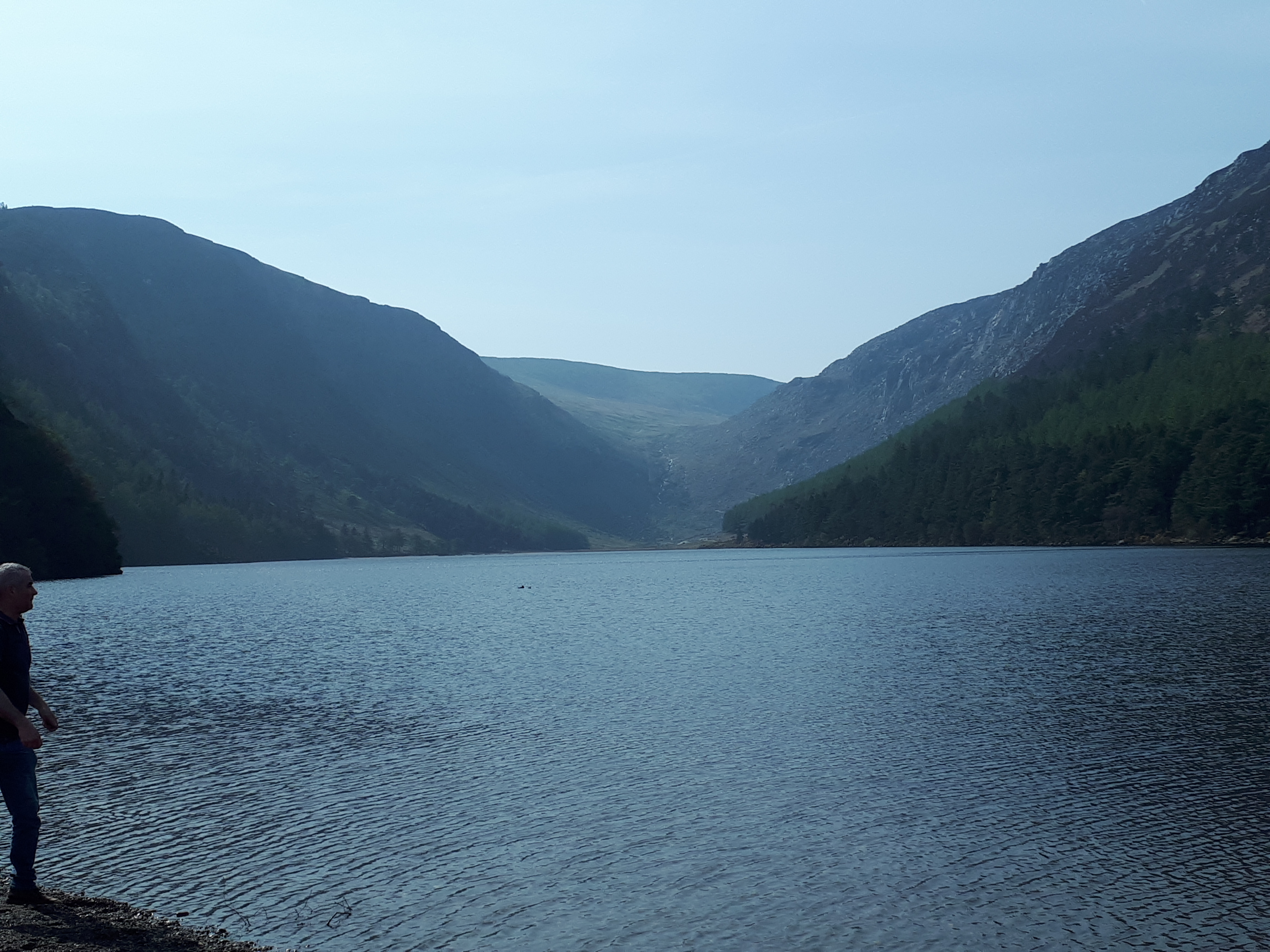
We also visited the western part of the country and took in side trips to Cliffs of Moher and the City of Galway. The Cliffs of Moher are really impressive. They stretch eight kilometers, reaching a height of 214 meters, with a vista embracing the Aran Islands. Almost thought I was in Newfoundland. The warm–we were told they are not always warm–winds whipping across the landscape took us back to the Harry Potter films, one of which was filmed here.

Galway is wonderful. Full of cultural charm, with lots of shopping and, of course, more restaurants and pubs than one can count.
Then there is Dublin itself. So much history with the experience of nationhood so near the surface of many conversations. Some of what tops the list include Dublin Castle, St. Patrick’s Cathedral, Christ Church, the National Museum of Ireland, St. Stephen’s Green, Trinity College, and the huge Phoenix Park that includes the Dublin Zoo, home to some very famous lions.
Our tour guides (two of the three were named John) used a wonderful style of speaking that I think I will try to use more in my teaching. Basically, they introduced what we would do, then told a story or two about what we would see, and then summarized before moving on to a new slice of the tour. Then, at the end, they shared some of the highlights. While it may be something that is just present in the Irish approach to interpersonal communications, it really worked, and was enjoyed by everyone.
Perhaps our true take-aways centre on the people, including the colleagues we met at the conference along with the native Irish we came to embrace through our travels in this breath-taking land.
I think we will be coming back.
Clayton Smith
Providing SEM Leadership in Times of Disruption
At this week’s Canadian Strategic Enrolment Management (SEM) Summit, we discussed SEM leadership in times of disruption. We focused on how changes in institutional leadership, governments, and technologies affect SEM performance. In particular, we discussed the impact of disruption on building community and international engagement.
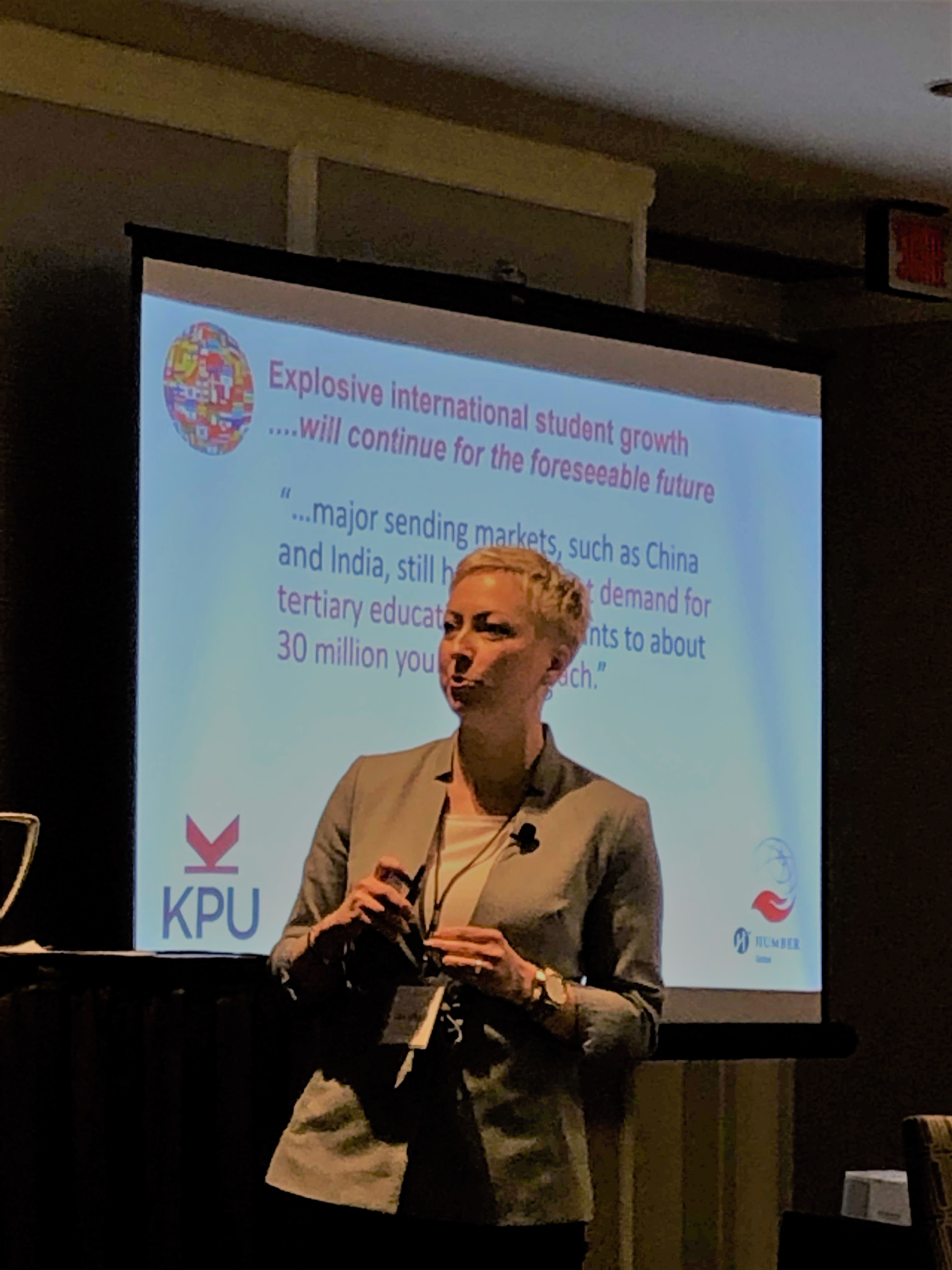
Some of our discussion points included:
- Who should be around the table when a disruption occurs? Are groups already formed, or is there a need to develop new groups?
- How do we get the data needed for decision-making? Some may already exist, but new data may also be needed.
- While disruption can leave us perplexed, we need to find ways to keep our sense of purpose while managing SEM during challenging and distracting times.
- Disruption can be an opportunity to try something new or to focus the institution more clearly on its educational values and aspirations.
- The growing challenge of maintaining data privacy and security in turbulent times.
- The opportunity disruption provides to move from competition to collaboration across the higher education sector.
For many, we are already in disruptive times in the area of international student enrolment and engagement. Some talked about the near explosion of international student enrolment in recent years, especially for students from India. We heard about how this challenge might be a way of bringing together budget and SEM; that sometimes disruption can be internal; that budget drives culture; and opportunities flow from effective brainstorming across institutional silos. We were reminded of the importance of supporting international students, both personally and academically, as they enrich our institutions.
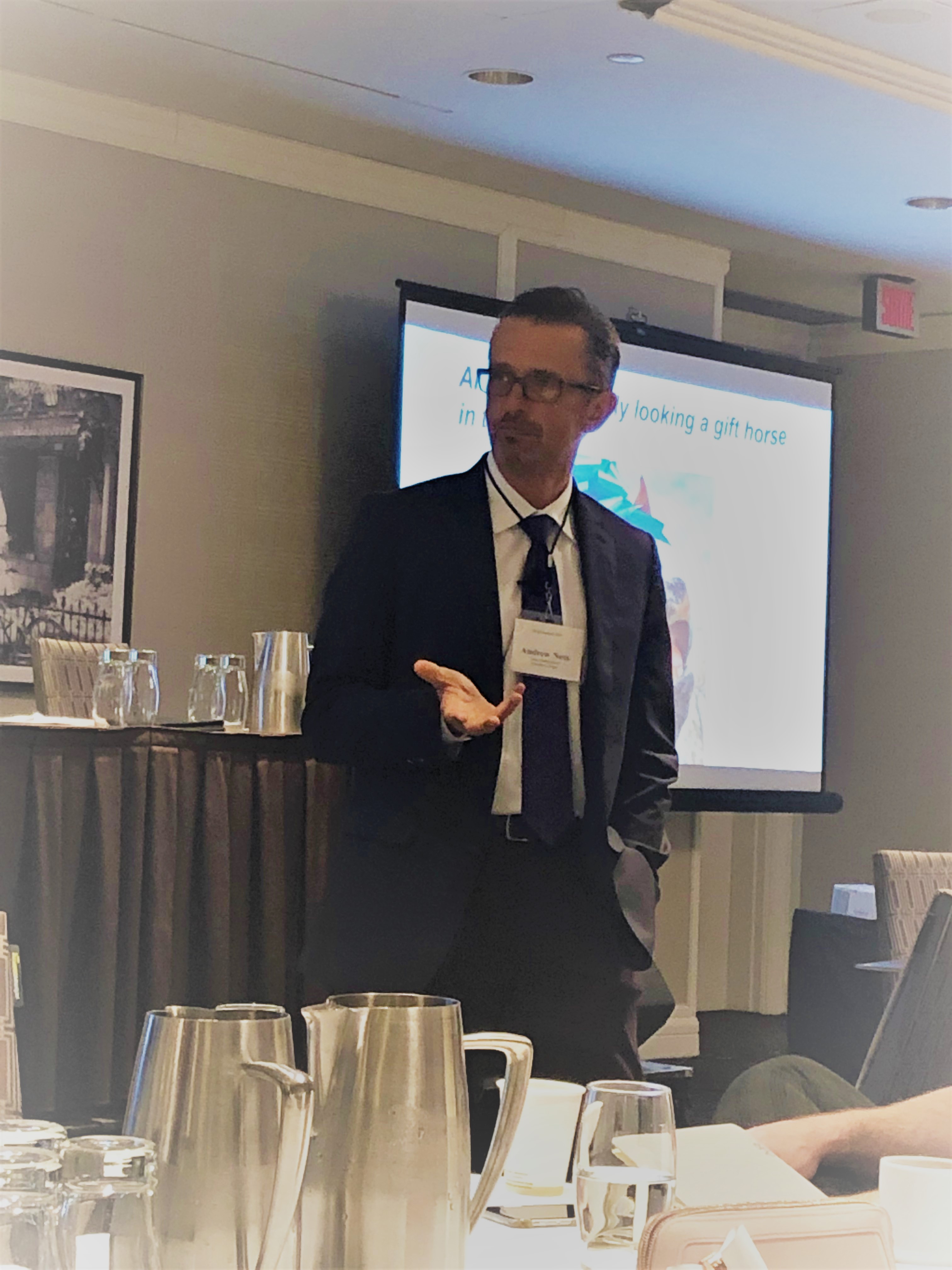
Jason Hunter, Vice President, Student and Community Engagement, at Humber Institute of Technology and Advanced Learning put it well when he said the Summit helped us “to frame critical issues” and “to build capacity” by developing a strong SEM network of administrators and educators across Canada. We all experienced a little SEM therapy.
For me the key take away is the importance of encouraging collaborative dialogue and planning for disruption as we work to enhance institutional health and student success through our SEM work.
Feeling renewed!
Clayton Smith
Crossing the Border
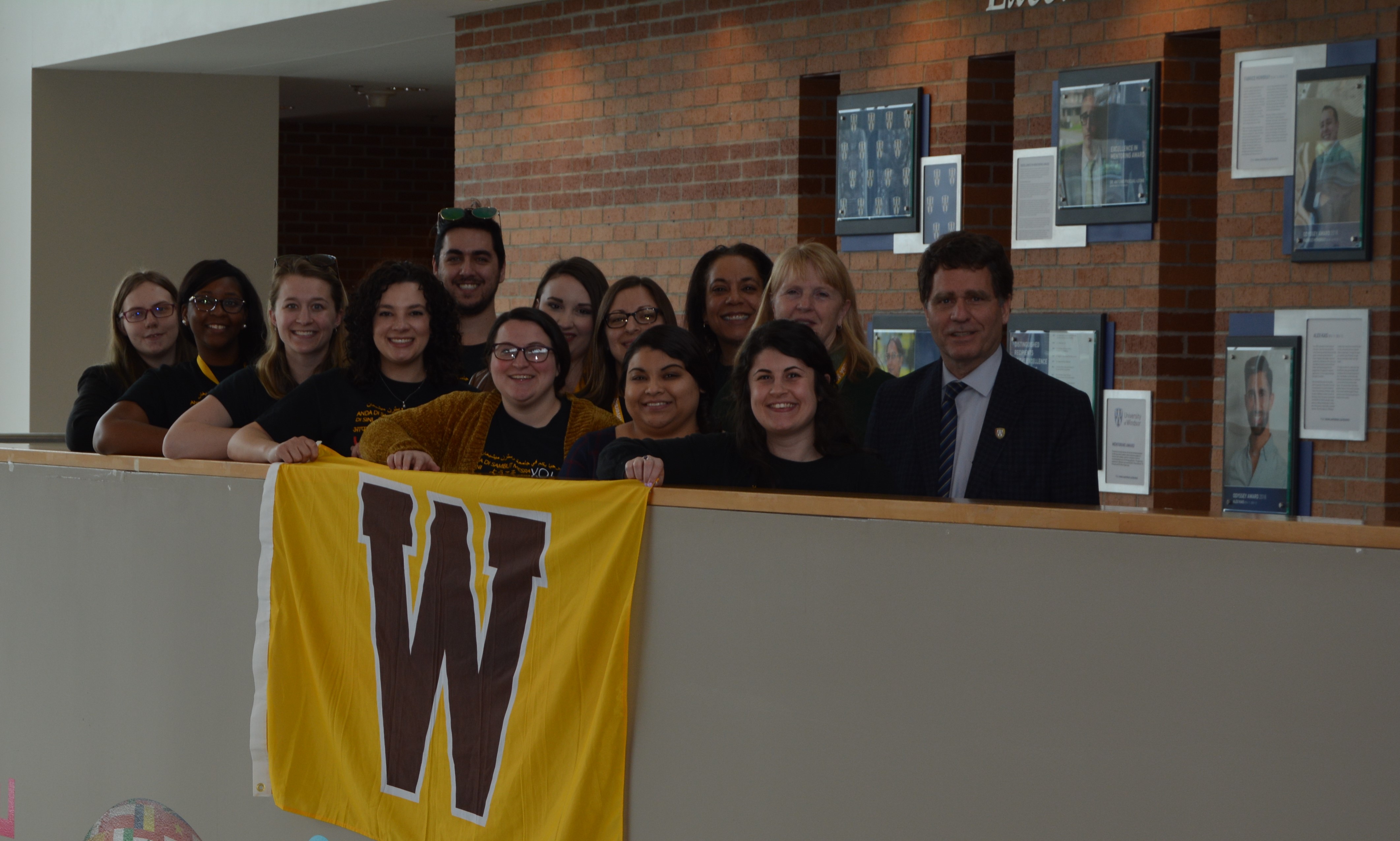
This week I, along with Windsor colleagues (Dr. Ken Montgomery, Dean, Faculty of Education; Ryan Flannagan, Associate Vice-President, Student Experience), welcomed graduate students and faculty to the University of Windsor from Western Michigan University’s Higher Education and Student Affairs Leadership program during their study abroad trip through Ontario. As a dual citizen (both US and Canadian), it was my pleasure to share a bit about Canadian higher education.
As Canadians often do, we opened our dialogue on the state of the weather, which was 9 degrees Celsius and with a forecast of light snow mixed with rain. Keep in mind this was April 10th! We then talked about geography. Some were surprised that they had traveled south as they came into Canada and that Windsor is the southern most part of Canada, with a good portion of the US north of us.
I was, of course, glad to see some adventurous students try poutine in our cafeteria, a made-for-students delicacy composed of fresh-cut french-fries topped with cheese curds and gravy. They loved it!
The visiting students and faculty were very interested in the similarities and differences between the educational systems and the challenges and opportunities facing the Canadian and Ontario higher education systems. This, of course, led to some discussion of the political system in Canada since higher education is mostly funded and controlled by the provinces.
Our conversation touched on many topics, but two were of particular interest: international education and student mental health.
On international education, we discussed the growing international student population on Canadian campuses, including the University of Windsor, and the stalled and declining enrolment of international students at many American colleges and universities.
Mental health for both American and Canadian institutions is a growing concern. Some were surprised to learn that mental health support at our campus is greater than it is in the community.
We then took a short tour of our student services, snapped a picture, and wished them well as they travelld to other Ontario colleges and universities.
My guess is they will head home with a richer understanding of Canadian higher education and a sense of some of the things we can do together in the years to come.
A pleasure!
Clayton Smith
Recent Comments